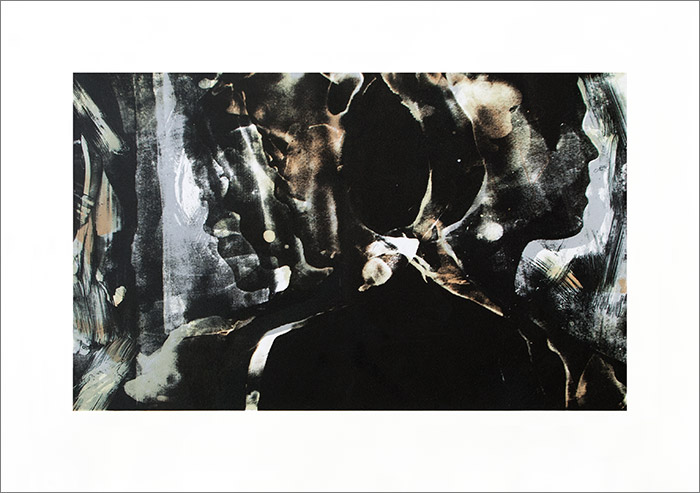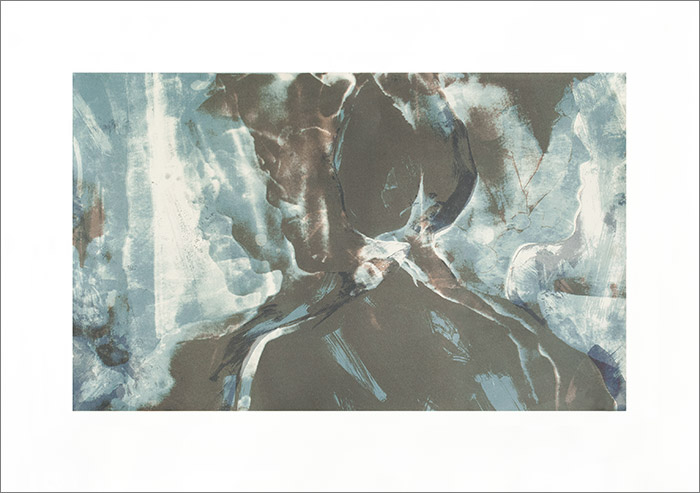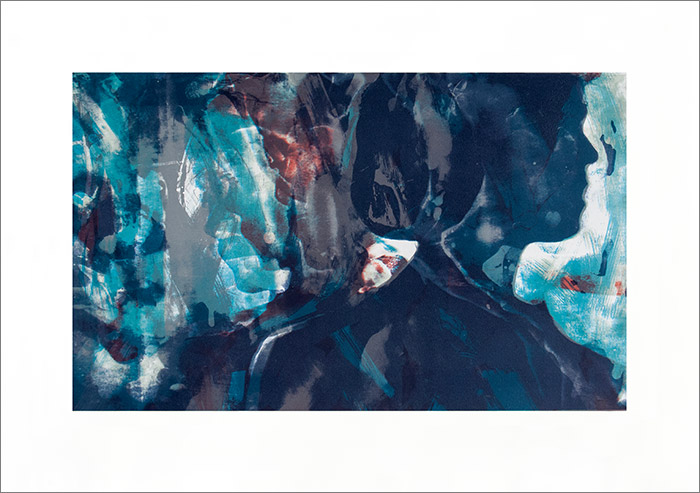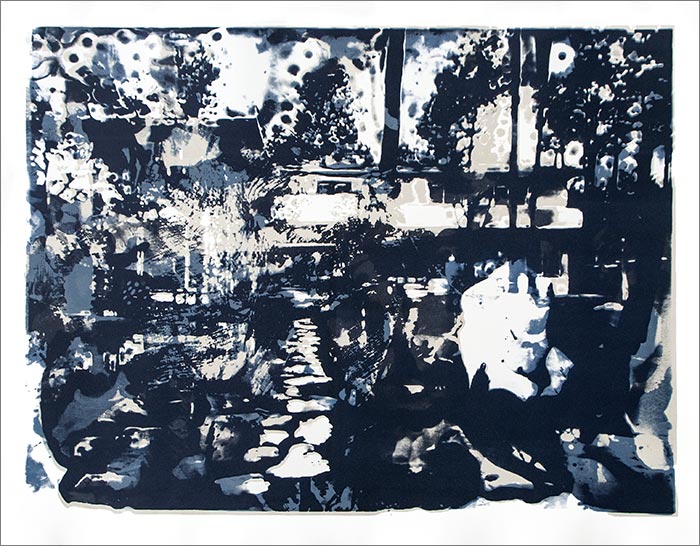
Matt Saunders
U.S.A., 1975
lebt und arbeitet in Cambridge, Massachussets und in Berlin
Für ausführliche Informationen,
Preise sowie Fotos von den Werken,
klicken Sie bitte HIER (.PDF)
Zum Vergrößern Bilder anklicken.
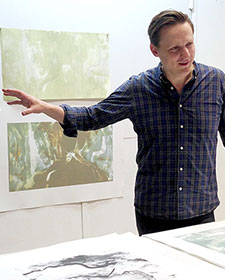
Matt Saunders ist bekannt für seine malerischen Bilder, die er in Video-Animationen kombiniert, und das sind seine ersten Lithographien.
Mit einem bahnbrechenden Ansatz für das Medium, Saunders projiziert Video auf lichtempfindliche Platten, Erstellen von zusammengesetzten Bildern, die die Animation in seiner Gesamtheit zu erfassen.
Die Kombination von mehreren Belichtungen mit gemalten Schichten, bilden seine Bilder ätherische Erforschungen des "unsicheren Terrains zwischen den Medien". Saunders 'Faszination für das bewegte Bild lieferte ihm eine einzig
While insistently studio-based, my work often ventures into the uncertain terrain between media. A fascination with the moving image—and by extension the uncanny repetitions and mobility of images in general—finds expression in works that hinge on their particular embodiments, the specific materials and means of their making. Animated films are fast-paced and staccato, but ask the viewer to see them as process-oriented abstractions, more to do with the hand than the lens. Still photos, made with painted “negatives” of oil on linen or plastic, come in series and exist in a kind of animated flux, between media and between instants.
Photolithography offered the possibility to work with still and moving images in an experimental way, as the plate could be exposed to an entire video sequence, not just a single frame. We started with a short clip—an animation of about 12 ink drawings—and ran it in a loop to expose several photolithographic plates, each slightly differently: dropping frames, changing exposure times and developing the plates with brushes, idiosyncratically, by hand. Some of the plates were reworked with acetone and they all were printed, layered in different combinations, to strive for a push-pull of frozen motion and a family of related but quite varied prints.
The first group of prints, Malina, draws from the film by Werner Schroeter (adapted by Elfriede Jelinek from the novel by Ingeborg Bachmann.) The unnamed heroine, who spins in the film around a center in crisis, is more or less discernable in each of the three prints, all of which are made from a series of drawings of a momentary scene in the film: a quick, indecisive turn; a complete rotation around the character.
Haus Poelzig layers a different type of animation. A single drawing—in this case the Berlin villa of the architect Hans Poelzig, designed by his wife and collaborator Marlene Moeschke-Poelzig—is exposed many times with broadly different developing, for a sequence in which the mostly stable architecture is caught up in a flexing and imperfect space. The photolithographic plates, further subjected to interruptions, erasures and even scale shifts, heighten these disjunctions. The home of Poelzig, a famously changing and visionary architect who was equally influential in his set designs for Expressionist films as in his modern industrial campuses, starts to transform into something else.
- Matt Saunders
© 2019 Ulrich Kühle • Alle Rechte vorbehalten.
